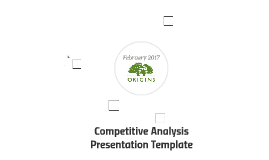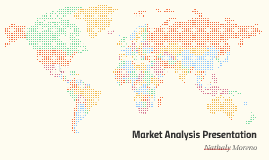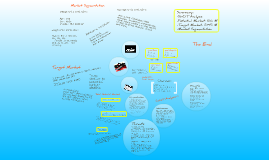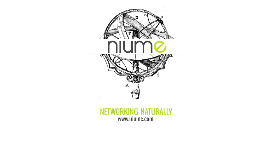Market Analysis Presentation
Transcript: Group 5 Kunal Grover - 7187815 Jasmine Sardea - 100574437 Taylar Cations - 100496696 Stratified sampling which is a part of probability sampling will be adopted. This will be done to divide the respondents into mutually exclusive groups such as gender, age, culture and jobs. However, there is still no concrete evidence of consumers preference of charity over environmental impacts and vice-versa. Contact Methods Coca-Cola Amatil has agreed to invest $450 million towards sustainable blowfill technology which will reduce their carbon footprint by 22% (Loane 2011). Initiator: Wants bottled water Influencer: Can persuade consumer preferences and aid in the location they go to find the preferred bottled water (Doria 2006, p. 274) Decider: Choosing to buy Thankyou Water due to the added social value Buyer: Physically purchase Thankyou Water after discussion and decisions User: Will be satisfied with their purchase of this luxury item Recognising the need for thirst! Competitive Environment Only 25% of people who drink bottled water have a single preferred brand they purchase (Wilk 2006, p. 315) Information Search However, Thankyou Water has used their technological opportunity by developing an app where consumers can track their impact! Economic Environment Experts have recently invented a plasma technology to purify water as quickly as 10 seconds using minimal energy (Taylor 2015, p. 8). Although provides an opportunity for CCA but it is an immediate threat for Thankyou Water for their inability to invest such large capital. Thankyou Water has diversifed the basic “pure” and “healthy” water emphasis adopted by other brands (Doria 2006, p. 274). Dolesh (2014, p. 36) stated the following: Production, packaging and transportation of plastic bottled water requires 17 million oil barrels! Amount of PET (polyethylene terephthalate) required is 3 million tones! 85% of these plastic bottles end up in landfill waste! Hence, Natural Environment poses a significant threat to the bottled water industry. Primary Data Consumer Decision Making Process Vision Natural Environment Australian Bureau of Statistics 2012, Reflecting a Nation – Stories from the 2011 Census, cat. No. 2071.0, ABS, viewed 22nd March 2015, <http://www.abs.gov.au/ausstats/abs@.nsf/lookup/2071.0main+features9020 12-2013> Dolesh, RJ 2014, ‘The Problem with Bottled Water’, Parks & Recreation, vol. 49, pp. 36-38. Doria, MF 2006, ‘Bottled water versus tap water: understanding consumers’ preferences’, Journal of Water and Health, vol. 4, pp. 271-276. Euromonitor International 2015, ‘Euromonitor Sector Capsule; Bottled Water in Australia’, Factiva, 24th February, viewed 25th March 2015, <https://global- factivacom.ezproxy.lib.swin.edu.au/ha/default.aspx#./!?&_suid=142726102067 206148782251402736>. Francisco, JPS 2014, ‘Why households buy bottled water: a survey of household perceptions in the Philippines’, International Journal of Consumer Studies, vol. 38, pp. 98-103. Gargano, S 2015, Bottled Water Manufacturing in Australia, IBISWorld, C1211b. Loane, S 2011, Coca-Cola Amatil unveils $35 million investment in bottle self-manufacture, Coca-Cola Amatil Media Release. Organisation for Economic Cooperation and Development 2014, Society at a Glance 2014 Highlights: AUSTRALIA OECD Social Indicators, OECD Publishing, Paris. Prescott, S 2014, ‘Company backgrounder’, Thankyou, September, viewed 19th March 2015, <http://thankyou.co/pdf/140918%20Thankyou%20Backgrounder.pdf>. Social Enterprise Awards 2013, Thankyou water – youth – led social enterprise of the year, viewed 16th March 2015, <http://socialenterpriseawards.com.au/thankyou-water/>. Taylor, M 2015, ‘New technologies empower pure water’, Laboratory Equipment, vol. 51, pp. 8-11. Thankyou 2010, Thankyou Water – The Power of One Bottle, 17th March, viewed 17th March 2015, <Thankyou 2015, ‘600mL Premium Spring Water’, The Water Range, Thankyou, viewed 22nd March 2015, <http://thankyou.co/water/range>. Wilk, R 2006, ‘Bottled Water: The pure commodity in the age of branding’, Journal of Consumer Culture, vol. 6, no. 3, pp. 303-325, doi: 10.1177/1469540506068681. Furthermore, we can have volunteers with ipads at various locations that can physically reach consumers of bottled water to undertake a short survey! Since bottled water is a low involvement routine product, we are developing our survey to have: Closed end questions for structured response Dichotomous questions to reduce vagueness Questions with Importance Scale to analyse specific consumer preferences Evaluation of Alternatives Purchase Cost of 1.5L Thankyou water = $2.10 Although Coles and Woolworths pose a threat to Thankyou Water as they look to drive volume growth through lower prices and increased availability (Gargano 2015, pp. 24-25). However, Mt Franklin and Cool Ridge present an opportunity for Thankyou Water as they offer an expensive product with no extra superiority. Since water quenches thirst, consumers will look for bottled water. Demographic

















